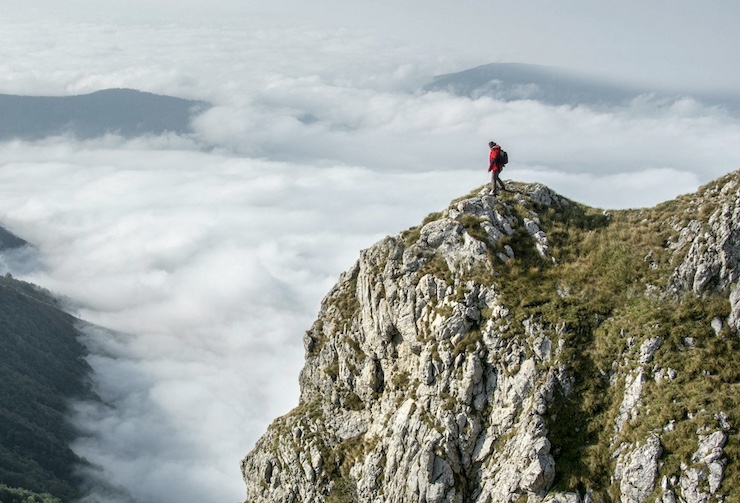Drones Can Reduce the Safety Risk to Mountain Climbers and Their Guides

Mountain climbers in Nepal scaling the heights of Mount Everest are aided in their efforts by guides and porters known as sherpas. The sherpas are often charged with hauling the hikers’ gear up and down the mountain and with removing any garbage left behind. It can be a perilous job. Dozens of sherpas have died over the years while performing their loyal duties. Now, thanks to drones, they may not have to suffer the rigors and dangers of the job.
In recent months, Nepali officials have begun conducting test transport flights using DJI’s new cargo drone, the FlyCart 30. The new drone has a heavier payload than most small cargo quadcopters – up to 66 pounds – and is durable enough to fly in inclement weather at altitudes up to 19,500 feet – ideal for mountain climbing conditions.
Early tests of the FlyCart30 showed that the drone was able to carry climbing gear between the lower base camps of the ascent, but did encounter some problems moving higher up the mountain closer to the Everest peak, where the altitude reaches 29,000 feet.
The problems weren’t really with the drone – but with the conditions. At higher altitudes, the air is too thin for the drone’s propellers to generate sufficient lift while carrying the cargo, and is forced to land or to reduce its load. Another problem is communication. Mountain environments like Everest have topographical features that can block a consistent radio signal from the drone pilot, causing the drone to lose power and crash. Nepali officials were aware of these limitations and chose not to try to fly the drone beyond the two main base camps located at 16,900 and 17,650 feet.
One option, officials say, is to add another drone operator at the higher base camps to relay radio signals from below. Nepali officials are confident that with this and other flight adjustments, the FlyCart 30 can be deployed successfully to reduce the safety risk to the sherpas and to ensure the success of future climbs.
Last week, the drone flew from an Everest base camp at 17,600 feet to a higher base camp near the peak at 19,900 feet, but was unable to land successfully. The following day the drone flew with a 40-pound load, including two oxygen camps, and was able to land without incident.
“Our outlook on this initiative is optimistic. We’re encouraged by its performance,” said Jagad Prasat Bhusal, the chief administrative officer of the local municipality.
Drones aren’t just a potential boon to mountain climbers. Elsewhere in the world, at major ski resorts in Alaska and New Hampshire, officials are deploying DJI surveillance drones to detect the likelihood of avalanches and other adverse weather conditions.
The DJI’s drone’s specially equipped cameras are able to measure the location, breadth and depth of snow layers precisely and to correlate the rate and level of snow accumulation with the timing of subsequent avalanches, taking due note of additional triggers. In theory, by modeling these same conditions for predictive purposes, it will be possible to identify avalanche-prone snow packs more precisely and to issue warnings of a potential avalanche well in advance of one actually occurring, researchers say.
Some resort locations in Europe are also experimenting with drones to identify avalanche victims buried beneath the snow. In Spain last year, a Latvia firm, SPH, deployed a DJI M600 drone equipped with a GPR system to map the terrain below an avalanche to locate potential victims, relaying the data collected to a ground-based SAR team. Several deceased avalanche victims were identified and their bodies retrieved,
In its final report SPH concluded that with additional refinements, including the adoption of a Beyond Visual Line of Sight capability, a fully autonomous drone-based GPR system could complement existing avalanche search and recovery methods, possibly locating live victims in time for a successful rescue.
|